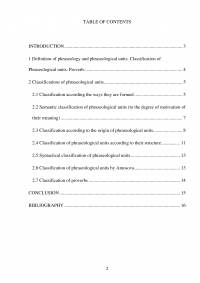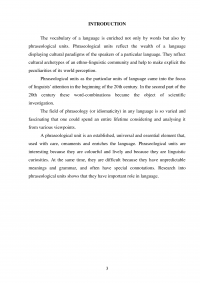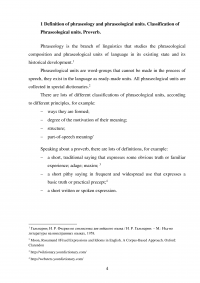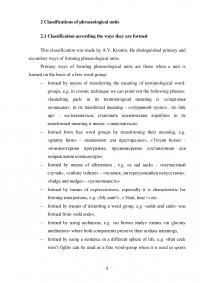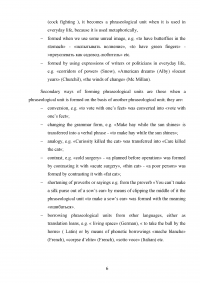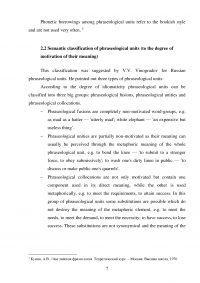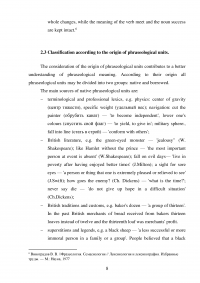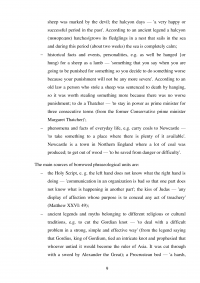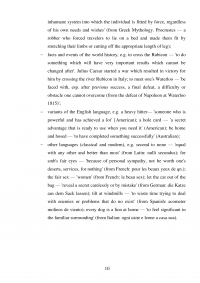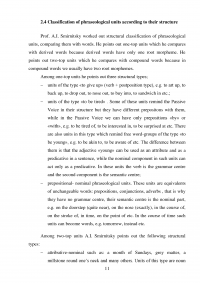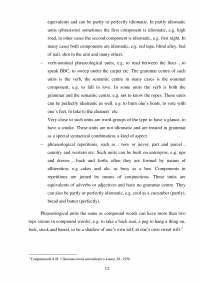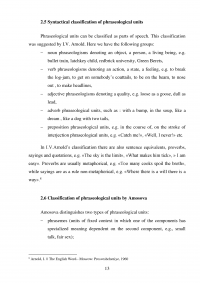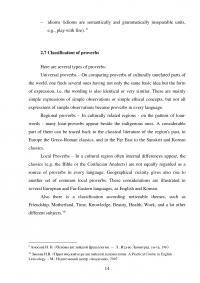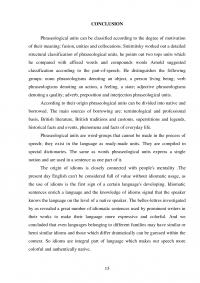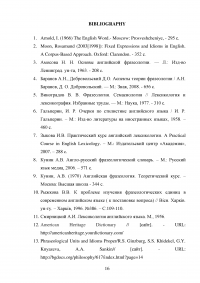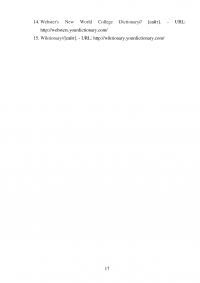Phraseological units and proverbs / Фразеологизмы и пословицы в английском языке
| Код | 275053 | ||
| Дата создания | 2019 | ||
| Страниц | 17 ( 14 шрифт, полуторный интервал ) | ||
| Источников | 15 | ||
|
Файлы
|
|||
|
Без ожидания: файлы доступны для скачивания сразу после оплаты.
Ручная проверка: файлы открываются и полностью соответствуют описанию. Документ оформлен в соответствии с требованиями ГОСТ.
|
|||
Образцы страниц развернуть (17)
Содержание
Введение
Фрагмент работы для ознакомления
1 Definition of phraseology and phraseological units. Classification of Phraseological units. Proverb.
Phraseology is the branch of linguistics that studies the phraseological composition and phraseological units of language in its existing state and its historical development.
Phraseological units are word-groups that cannot be made in the process of speech, they exist in the language as ready-made units. All phraseological units are collected in special dictionaries.
There are lots of different classifications of phraseological units, according to different principles, for example:
...
2.1 Classification according the ways they are formed
This classification was made by A.V. Koonin. He distinguished primary and secondary ways of forming phraseological units.
Primary ways of forming phraseological units are those when a unit is formed on the basis of a free word-group:
- formed by means of transferring the meaning of terminological word-groups, e.g. in cosmic technique we can point out the following phrases: «launching pad» in its terminological meaning is «стартовая площадка», in its transferred meaning - «отправной пункт», «to link up» - «cстыковаться, стыковать космические корабли» in its transformed meaning it means -«знакомиться»;
...
2.3 Classification according to the origin of phraseological units.
The consideration of the origin of phraseological units contributes to a better understanding of phraseological meaning. According to their origin all phraseological units may be divided into two groups: native and borrowed.
The main sources of native phraseological units are:
- terminological and professional lexics, e.g. physics: center of gravity (центр тяжести), specific weight (удельный вес); navigation: cut the painter (обрубить канат) — 'to become independent', lower one's colours (спустить свой флаг) — 'to yield, to give in'; military sphere:, fall into line (стать в строй) — 'conform with others';
...
Conclusion
Phraseological units can be classified according to the degree of motivation of their meaning: fusion, unities and collocations. Smirnitsky worked out a detailed structural classification of phraseological units, he points out two tops units which he compared with affixed words and compounds words Arnold suggested classification according to the part-of-speech. He distinguishes the following groups: noun phraseologisms denoting an object, a person living being; verb phraseologisms denoting an action, a feeling, a state; adjective phraseologisms denoting a quality; adverb, preposition and interjection phraseological units.
According to their origin phraseological units can be divided into native and borrowed. The main sources of borrowing are: terminological and professional basis, British literature, British traditions and customs, superstitions and legends, historical facts and events, phenomena and facts of everyday life.
...
Список литературы [ всего 15]
- Arnold, I. (1966) The English Word.- Moscow: Prosveshcheniye, - 295 с.
- Moon, Rosamund (2003[1998]): Fixed Expressions and Idioms in English. A Corpus-Based Approach. Oxford: Clarendon. - 352 с.
- Амосова Н. Н. Основы английской фразеологии. — Л.: Изд-во Ленинград. ун-та, 1963. - 208 c.
- Баранов А.Н., Добровольский Д.О. Аспекты теории фразеологии / А.Н. Баранов, Д. О. Добровольский. — М.: Знак, 2008. - 656 с.
- Виноградов В. В. Фразеология. Семасиология // Лексикология и лексикография. Избранные труды. — М.: Наука, 1977. - 310 с.
- ...

